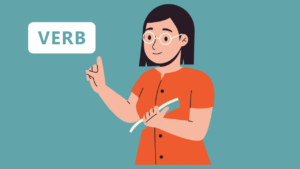A long time ago I realised that empowering my students is my mission. I use various resources to achieve this: inspirational stories, videos, poems, and songs, to name but a few.
Nevertheless, I noticed that more and more students would come to me and say:
I don’t believe in myself.
I feel anxious.
I’m struggling to manage my feelings.
I can’t calm my mind.
I am not confident enough.
Or parents would say:
Can you help my child focus better?
Does it sound familiar?
So twelve months ago I decided to introduce MEDITATION to my students. Meditation is a powerful mindfulness tool that I have been using in my life for a few years. I believe that I owed my personal growth and enhanced creativity to meditating so I knew I was on to a winner.
What is meditation?
It’s a technique where we focus on our breath, sound or a mantra.
Meditating has a lot of benefits. And while many people use this mindfulness tool to improve their health and relax their mind and body, we, educators, can boldly introduce it to our students because it:
-stimulates the imaginative aspects of the brain;
-encourages critical thinking
-enables us to reflect on our thoughts
-helps us to learn how to manage our emotions (great as a pre-writing activity)
-we become more self-aware

But how can we, English teachers, embrace this powerful mindfulness activity?
1) At the beginning of a lesson to calm our students, especially after they’ve had a PE lesson 🙂
It helps the students feel more present in the classroom.
2) Before a reading activity to help the learners focus better. My students often complain that they’re struggling to calm their mind while reading. So I tend to play a short meditation before the start of the task. I’ve seen the calming effect of meditating and highly recommend it.
3) Before a writing activity
I usually play a short meditation and then give a writing prompt, which could be:
-a poem
-an extract from a book
-a question with 6 words for the students to use if they want to
-a sentence/paragraph from a story we’ve read in class
Then I ask the students to write one of the following:
a poem/ a short story/ a diary entry/ an essay/ a letter
Or if they are kids, they can draw something.
I also give them a time limit, which is usually 10 minutes.
Of course, please bear in mind that the prompt has to be appropriate for your students’ age and level.
I firmly believe that it is in this moment of stillness, when we are able to connect with our inner power and creativity. I’ve seen students who are not strong writers create some amazing pieces.

During my workshop EMPOWERING STUDENTS, which I ran last month at EdYOUfest in Street, England, I demonstrated this technique to the teachers and their response was overwhelming. Not only did they write some great stories and poems but the prompt also brought lots of memories and they were not afraid to show the tears in their eyes.
I told you that this mindfulness tool could be powerful, didn’t I?
So here’s the mediation activity that I did during my workshop. It is suitable for older teenagers and adults.
1. I played a short breathing mediation. Link here
2. Then I gave the following writing prompt
I would like you to go back to your school years and remember a time when you felt seen/acknowledged by a teacher. How did it make you feel? What did the teacher do? What sounds and smells does this memory bring to you?
3. Here are six words that I dictated so that they could use them if they wanted to:
simultaneously, accepted, presence, beyond, deep, judgement
4. I gave them ten minutes to write and as I mentioned before the results were incredible.




